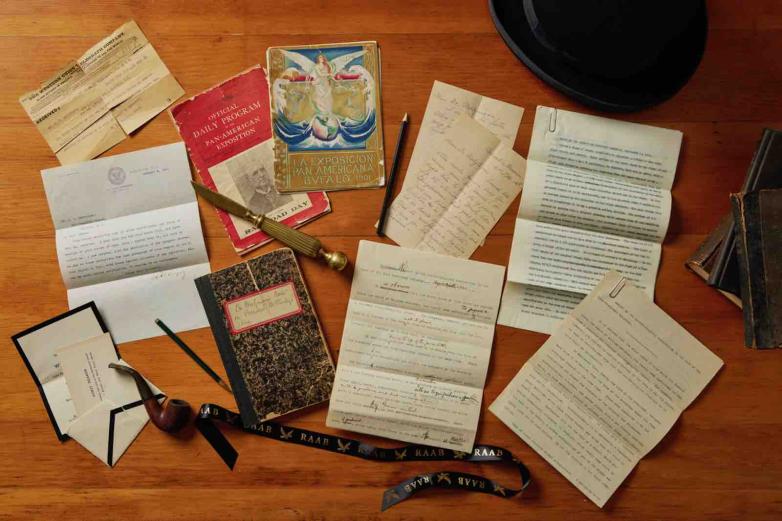President William McKinley's Autopsy Report and Newly Found Notes Acquired by Raab

Part of the McKinley archive
The Raab Collection has announced that it has acquired the original autopsy report and unpublished medical notes from the assassination of President William McKinley belonging to Dr. Herman Matzinger, who conducted McKinley’s autopsy.
This report announced the important news that neither initial infection nor poison had played a role in the president’s death, refuting two theories circulating at the time. Part of a larger archive that documents Dr. Matzinger’s work to determine McKinley’s cause of death, and including his notes, letters, and ephemera, this collection has stayed with the family of the surgeon who conducted McKinley’s autopsy, until now. The archive is valued at $80,000 and has never before offered for sale .
“This gives us new and fascinating insight into an important moment in American history, the nation grieving, demanding answers about a fallen president,” said Nathan Raab, president of The Raab Collection. “We’ve never seen anything on the market like it.”
On September 6, 1901, President William McKinley was attending the Pan-American Exposition in Buffalo, New York, when the anarchist Leon Czolgosz stepped forward and shot McKinley twice at close range. Doctors quickly tended the president, and even given the constraints of medical knowledge at the time, the initial surgery appeared successful. However, his health soon began to decline, and McKinley died on September 14, becoming the third president in U.S. history to be felled by an assassin.
In the days that followed McKinley’s death, some doctors criticized the medical treatment he received, while others posited that poison (via a poison-tipped bullet) or some other agent had been involved. A formal report was commissioned, to be conducted in two parts; one covering the shooting and surgical operations, the second consisting of an autopsy and bacteriological report.
Doctors Harvey Gaylord and Herman Matzinger conducted the autopsy together. Matzinger, a well respected New York medical professional, worked alone on the bacteriological analysis using samples from the wound site, the weapon, and the bullets, which were sent to him. After weeks of investigation, Matzinger sent his report to his colleagues. In this remarkable manuscript, he offers the conclusion that everyone in the country had been awaiting: “The significant absence of known pathogenic bacteria, particularly in the necrotic cavity, warrants the conclusion that bacterial infection was not a factor in the production of the conditions found at the autopsy.”
In other words, any infection developed later, as a result of trauma and complications from the shooting. Neither was there any evidence of poison.
Today it is believed that McKinley perished from an infection that developed along the bullet pathway and around the pancreas, which would have been nearly impossible to treat at the time.
The archive offered at Raab consists of the possessions of Dr. Matzinger, passed down to his family and then acquired by Raab. These include:
- Matzinger’s 17-page notebook of lab notes and scientific observations, dated September 14-30, 1901. The vast majority of this information is unpublished
- Matzinger’s draft manuscript of Report of the Bacteriologic Examination in the Case of the Late President McKinley, with his handwritten notes showing the work
- Matzinger’s final typed report
- Matzinger’s final, full printed copy of the report
- Matzinger’s carbon copy of Notes on the Autopsy of President McKinley, September 14, 1901
- The government’s acknowledgement of McKinley’s death certificate from Matzinger
- Tickets to McKinley’s funeral service
- Related letters and ephemera















